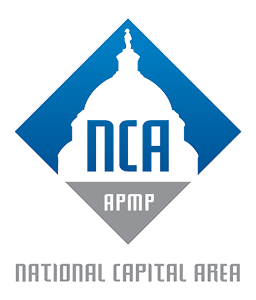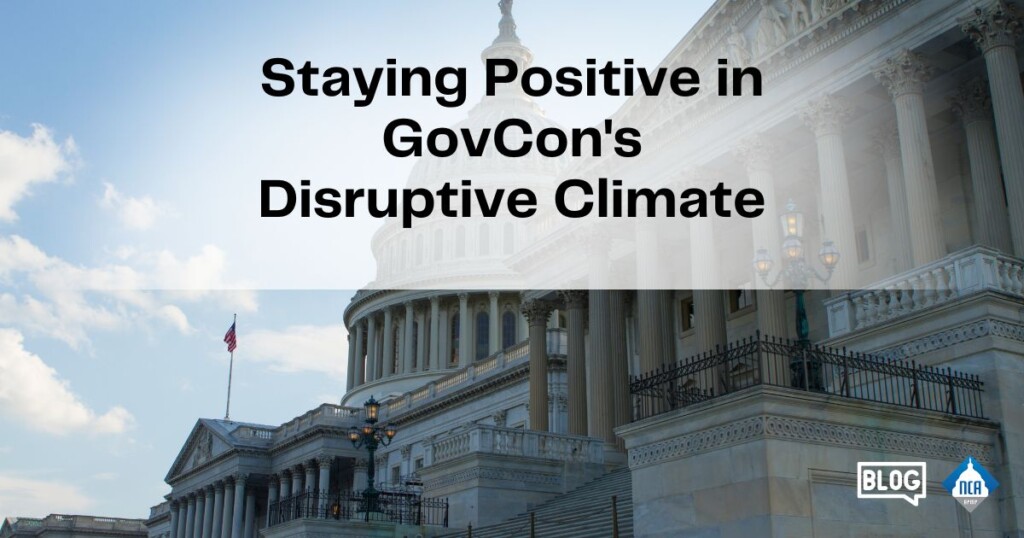There are few things worse than finding yourself working late or on the weekend trying to wrap up a proposal you know your company will not win.
Maybe the account executive thought, “why not, it’s worth the shot,” or a go-to-market leader thought your company needed to throw their hat in the ring or that they needed to respond because a competitor did as well. Whatever the case, you and your company are in a lose-lose situation wasting valuable time and resources – not to mention the additional stress on yourself and a team already presumably stretched too thin.
The thing is, you already know you shouldn’t be pursuing this but your company doesn’t have the necessary qualification process (or the necessary adherence to that process) to weed out the no’s from the go’s.
The Issue: Lack of Organizational Appetite

Your executives know that prioritization is all-important to the success of your business. Their job depends on their own brand of qualification to ensure that organizational resources are being spent in an efficient revenue-driving way. In fact, they are probably already ruthlessly qualifying non-proposal sales pursuits because they know the value of ensuring that their reps are only focusing their time on winning deals.
The issue, then, lies in helping your executives bridge the mental gap to prioritize more effective proposal qualification. Not only does your sanity depend on this, but the company’s health does as well. Luckily, the fix may be simple if you have the right metrics, mindset and talk tracks.
Step 1: Mental Re-Orientation
To generate organizational buy-in for more effective qualification, you have to speak to your executive’s priorities and their way of thinking. Their main focus is on hitting their revenue numbers efficiently, and it just so happens that your goals align perfectly with theirs.
Every action your team and your company takes has an opportunity cost. If you are pursuing something, that means that you aren’t pursuing something else, or that you aren’t pursuing something else as thoroughly as you would like. This is true for every sale, but it is even more of consequential with proposals where there can be a large opportunity cost of pursuit. Proposals can take considerable time and effort to pursue and any case for better qualification must be rooted in an understanding of the true cost of pursuit so you can understand what you may be wasting on poor fits.
The key then, is getting your executive to understand this cost to the organization and what exactly your company stands to gain from better qualification.
Step 2: The Metrics to Track
At the end of the day, your case will come down to your ability to find and present the time and money that is wasted on poor-fit opportunities and show the ROI to be gained from better qualification. In order to do this, you should start tracking some of the following metrics as well as any others that may be relevant to your particular team:
- The average cost of responding to an RFP.
- Your win rate year-over-year (or quarterly if needed).
- A 20-20 hindsight view into opportunities that you believe you should not have pursued along with clear reasons as to why that was apparent from the get-go (but do not present this in a way that blames others).
- The total amount of proposals you respond to annually and/or quarterly.
- Clear red flags for poor-fit opportunities.
By no means is this an exhaustive list, but it helps you arrive at the metrics we will cover in Step 3.
Step 3: Making the Case and Doing the Math
To best make the case to executives about the value of enhanced proposal qualification, let’s quickly calculate some metrics based on the data that you have assembled. Below are some quick, back-of-the-napkin estimations to help you have the metrics you will need in hand.
| Questions | Your Answers |
| Estimate the average number of hours it takes to complete an RFP: | Average Hours to Complete RFP: |
| Estimate the average hourly cost of a resource working on an RFP. (If you don’t know, $100/hour is a fine estimate): | Average Hourly Cost of an RFP Resource: |
| Calculate the average cost of an RFP response by multiplying A x B: | Average Cost of an RFP Response: |
| How many RFPs do you respond to a year? | RFPs Responded to a Year: |
| Of the RFPs you’ve responded to, estimate the percentage that your company would have been better off not responding to (If you don’t know, we find about 10-20% to be a fair estimate.) | Percentage of RFPs that Should Have Been Qualified Out: |
| Find the average number of RFPs that should have been qualified out by multiplying D x E: | Average Number of RFPs that Should Have Been Qualified Out: |
| Find the estimated annual hours of productivity that could be returned to staff by multiplying A x F: | Annual Lost Hours of Productivity to Low-Probability RFPs: |
| Find the estimated average annual wasted investment in low-probability RFPs by multiplying C x F: | Annual Cost of Responding to Low-Probability RFPs: |
With these metrics in hand, you can now make a data-backed case to your executive for the power of enhanced proposal qualification. Of particular importance, the annual lost hours of productivity and the annual cost of responding to low-probability RFPs tend to make the biggest impact on executives. Help them understand in quantitative terms the cost of porous qualification, and you can quickly help them understand just how important enhanced qualification can be to not only your function but to the entire company’s health.
Bonus: Click here for an easy-to-use Opportunity Cost calculator.
Step 4: Talking to the right people in the right way.
Each company is different, and it will be up to you to discover everyone that you may need to sway to sell your executives on better qualification.
However, below are some of the roles that you would typically need to secure buy-in from to accomplish your goals as well as a look into potential talk tracks to make your case.
C-Suite Executive (CRO, VP of Sales, VP of Operations)
Main Priority: Hitting revenue number efficiently
Second Priority: Promoting overall company health
Points of Emphasis: Enhanced proposal qualification improves company efficiency
Talk Track: Every proposal response is a significant investment that requires time and energy from contributors across the company. To promote efficiency, we must be judicious to which proposal opportunities we respond. Qualification processes and software that allow us to focus on the highest-value opportunities and avoid the lowest-value opportunities promote focus among employees, leading to better outcomes in nearly every function. Otherwise, we are wasting money and time unnecessarily.
Director of Sales / Director of Capture Management
Main Priority: Hitting the Quarter’s (or this Year’s) Revenue Goal
Secondary Priority: Sales Efficiency of Reps
Points of Emphasis: Enhanced proposal qualification increases revenue and sales efficiency
Talk Track: When we respond to too many low-probability proposal opportunities, the proposal team has to resort to templatized responses instead of detailed, customized proposals. By not pursuing the lowest-probability opportunities, the proposal team will be able to be more strategic about responses, increasing our win rate and increasing overall revenue.
Account Executives are wasting significant time working on proposals. Even though the proposals team does the bulk of the work, the Account Executive must still be involved in strategizing, managing the customer relationship, attending oral presentations, and more. Every additional RFP they work on takes away time from doing what they do best: building relationships with prospects. With enhanced proposal qualification, we can return dozens of hours back to the Account Executives and boost our sales efficiency metrics.
Director of Proposal Management
Main Priority: Maintaining a competitive win rate
Secondary Priority: Producing high-quality content
Points of Emphasis: Enhanced qualification improves win rates, gives proposal teams more time to produce high-quality work
Talk Track: Enhanced proposal qualification will allow us to identify and avoid the lowest-probability opportunities. Without responding to the wrong opportunities, our win rate should see immediate improvement. In addition, it will allow the proposals team to produce better work, which should further improve the win rate. In addition, with enhanced proposal qualification in place, our team can work on some of the strategic content overhauls we’ve long discussed but rarely had the time to implement.
Director of Revenue Operations
Main Priority: Company efficiency
Secondary Priority: Team satisfaction with operations
Points of Emphasis: Proposals are costly, choose wisely. Reduce team tensions through the intelligent pursuit of proposal opportunities.
Talk Track: Every proposal is a significant investment, requiring dozens of hours of time from contributors across the function. Before pursuing an opportunity, we should analyze the opportunity cost, the potential fit, and the potential profitability to make wise investment decisions with company resources.
By reducing the amount of time spent on low-probability proposal opportunities, several efficiency metrics should improve, including the Magic Number, Sales Efficiency, Proposal Win Rates, and more.
Conclusion
Enhanced proposal qualification is one of the most impactful ways to improve not only the proposal team’s performance but also the entire company’s health and efficiency. For executives, improved proposal qualification translates to more revenue, improved win rates, reduced team tension, more accurate forecasts, and improved company morale. For the proposal team, better qualification also translates to more time for high-quality work, reduced stress, more involvement in strategic discussions, and fewer nights spent in the office away from loved ones.
We hope that the above information has been helpful, and if it has we have another resource that you might be interested in. Many of us at Patri have successfully made the case to our executives in previous companies and that was one of the reasons we started Patri in the first place. To further help your efforts, we have recently released a quite long eBook titled “How To Sell Enhanced Qualification To Your Executive” covering some of the above points as well as many others that may help you on your journey to less wasted effort and fewer long nights.
To read the eBook, click here.




